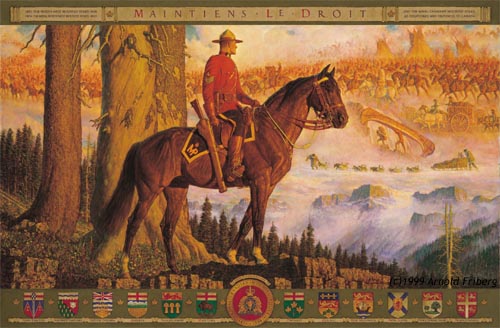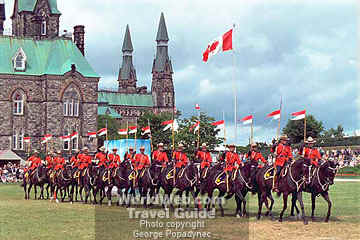
Police
"Has thou given the
horse strength? Hast thou clothed his neck with thunder?
He mocketh at fear, and is not affrighted; neither turneth he back from the
sword."
~ Job 39:19, 22

In this nuclear age it is surprising to realize that in cities all over the
world police horses still help to control both pedestrians and traffic.
There are over 200 horses doing this type of work in New York (United
States), and their
patience and discipline command enormous respect among the general public.
The well-groomed, quality horses and adept riders add color
and attraction to ceremonial occasions, as well as controlling the crowds.
Not only are ceremonies and parades always popular as colorful spectacles, but
the mounted police have long established their usefulness for patrolling city
streets, and they also have the advantage of height for locating the cause of a
traffic jam, or the potential trouble spot in a big crowd.
In the past the police horses' size and meticulous training
have commanded a healthy, if unwilling respect from rowdies more accustomed to
horsepower than horseflesh. It is problematical whether horses should
continue to be used for breaking up disturbances, since darts, lighted matches
and worse, have been employed against them.
In the African state of Lesotho, the entire police force is
mounted. The Tehran (Iran) police horses are all fiery stallions. In Oslo
(Norway)
police horses are escorted into retirement by singing school children. The
famous Canadian
"Mounties" now keep their horses only for ceremonial occasions
like their celebrated Musical Ride.
(The picture above is of a Canadian Mountie. The motto
at the top is French for, "Maintaining the Right.")

It is
in police work--for example, in the Royal Canadian Mounted Police (above)--that
the horse/man relationship reaches one of its most refined levels. Police
horses are trained to overcome almost completely their natural flight-or-fight
instinct, and to face up to situations like violent crowds, gunfire and physical
force from rioters. They must go wherever their rider asks, at any hour of
the day or night, alone or in company, without question.
In their initial training, they are taught to approach a
potentially frightening object or situation and are turned away from it, with
great praise, just before the trainer feels the horse might object.
In this way, the horse never develops resistance to its work, and comes to trust
its rider implicitly.